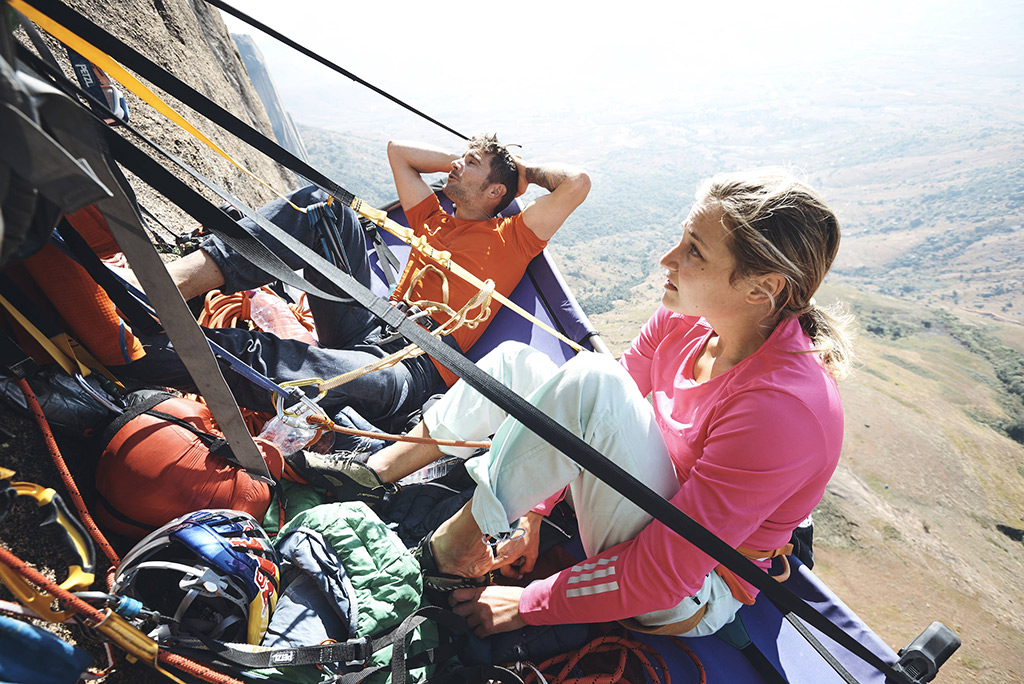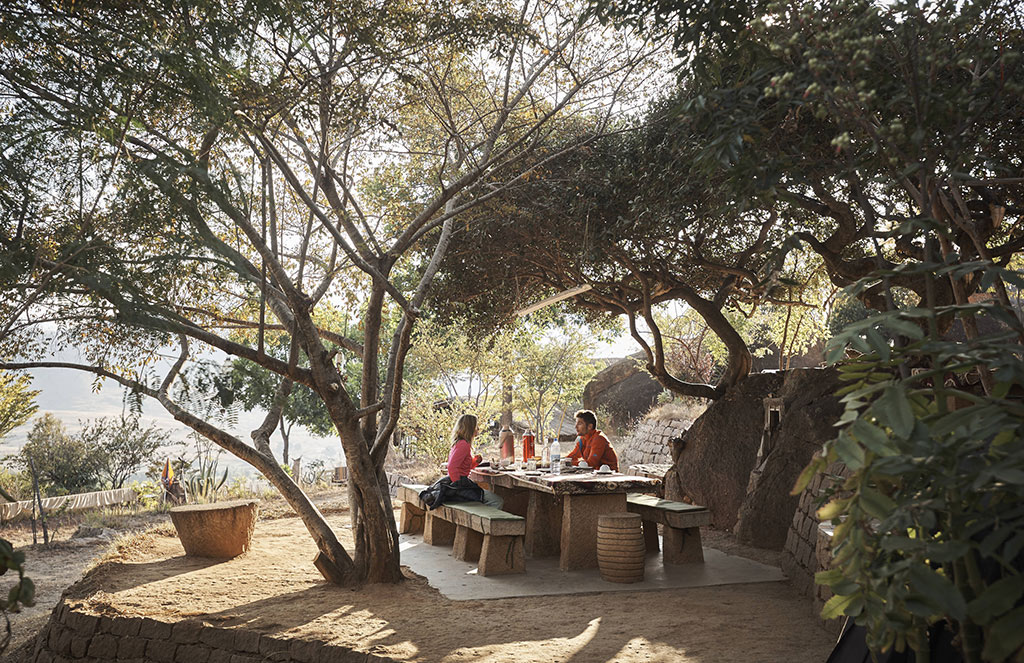Reflections on Mora Mora, First Female Ascents and What’s Next
On July 20, pro climber Sasha Digiulian and her partner, Spaniard Edu Marin, nabbed the second ascent of Mora Mora (5.14b), one of the hardest multipitch big-wall freeclimbs in the world. The 2,300-foot wall is in remote Madagascar on the Tsaranoro Massif, towering above other colorfully streaked granite domes and outcrops. The duo worked to unlock the technical sequence that, in a Red Bull report, Sasha referred to as a dance. “Every foot placement needs to be laser-precise. Light breaths and slow movements, body positioning and trusting negligible little crystals.”
It was her most difficult big-wall to date and another amazing addition to what’s already been one of the greatest years in climbing history. We caught up with Sasha after she returned home to Boulder, Colorado.

Sasha Digiulian on Mora Mora (5.14b) | Photo: Francois Leabeau/Red Bull Content Pool
You’ve said Mora Mora was a goal of yours for a few years—what drew you to it?
Madagascar has been a dream destination of mine for a while, and I remember seeing news about Adam Ondra´s trip many years ago, so in dream-boarding projects in different places, this climb was a major draw for what to climb in Madagascar.
What was your favorite experience in Madagascar outside of sending?
Exploring a new place, from the culture to the lemurs to unplugging and being present in a remote region. The majority of people where we were live off of natural resources, grown and maintained by entire families, from staple grains to livestock and vegetables. Communal love and appreciation for natural resources creates a much stronger sense of wealth than the absorbing nature of materialism.

Madagascar’s Tsaranoro Massif | Photo: Francois Leabeau/Red Bull Content Pool
It’s an amazing looking wall with some intensely techy looking moves. How long did you work the route before the final push, and what was the process like? What was your daily routine?
In total, the climb took about 15 days of work to complete. We arrived at the beginning of July. On our first day, we hiked up to the wall—about 90 minutes of steep hiking terrain—to check out the line. The next day, we began the process. That included waking up early, hiking to the base of the wall, climbing the beginning pitches, setting static lines and eventually arriving at the crux of the route—which we needed a few days to figure out. When we had our portaledge (it had been delayed by the airline in transit), we stationed it below the 8c (5.14b) crux, seven pitches up. Our routine basically broke down to hiking 90 minutes in the morning, jumaring (or rope ascending) about 1,500 feet, and then climbing on the 8c pitch, rappelling back down, and hiking out. When we both freed the 8c, we knew we could go for a push attempt from the ground.
Did you add anything new to your training to prepare?
I began a three-month training cycle with Patxi Usobiaga in January. From after the training program until May, I focused on similar lines to Mora Mora, but single-pitch on rock, in Spain. Then I was in Yosemite climbing a big wall, which helped refresh my big wall skills. This has been my first year out of school, and I have been able to dedicate more time and energy towards making training and climbing outside the centerpiece of how I live my life.

Sasha and Edu below the crux sequence | Photo: Francois Leabeau/Red Bull Content Pool
You said that starting a new big-wall project is difficult mentally, that you have a “heavy feeling of hesitancy.” How do you work through that? Or does it simply fade as you start piecing things together? I think that hesitancy is something we all feel from time to time.
When I first arrive to a new big-wall project, I feel gripped. I think that this has to do with external factors, like how exposed or sheer a cliff can be, creeping in to my mental game. I need to have a little bit of time to learn the strength of the rock, how to read it and adjust to its style. Then I can start really pushing myself. I think this is a process that I just need to be receptive and patient with—to accept how I feel and be in tune to these sensations but to challenge them and keep pushing through.
This is a Second Ascent and a First Female Ascent. What are your views on the FFA and how will you remember this accomplishment?
First Female Ascents are significant. Climbing is a sport traditionally dominated by men, so when a female does something that no other woman has done before, I find that it creates movement within and outside of the climbing community and motivation for other women to push themselves and not be limited by what has not been done in the past.
How did you and Edu celebrate?
We had a few bottles of wine… but I guess that’s not just when we sent! We met with our physio Pablo Scorza the moment we got back. I was really sick for about a week and a half after returning, a reaction I had to a preventative medicine I was taking. We were physically defeated but mentally psyched. After taking about two weeks off, we are now motivated to gain some physical power back that we lost on the sea of technical granite.

Sasha and Edu relax in nearby Andonaka. | Photo: Francois Leabeau/Redbull Content Pool
So, traditional final question, you just sent your hardest big-wall route to date. What’s in your sights next?
This August and September I am focusing more on staying home in Colorado, climbing local classics outdoors and training. Coming up I have some sport climbing goals, but I’d also like to free-climb a route on El Capitan in Yosemite and continue to explore new adventures—from developing and bolting new areas to climbing more challenging big-wall test pieces like Mora Mora.

Sasha Digiulian after her successful climb of Mora Mora (5.14b) | Photo: Francois Leabeau/Red Bull Content Pool
